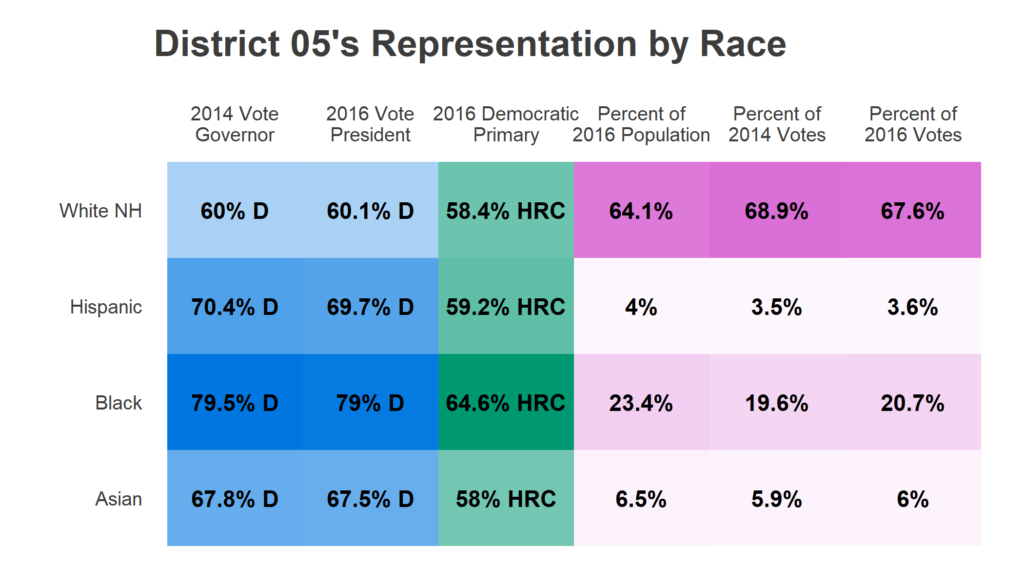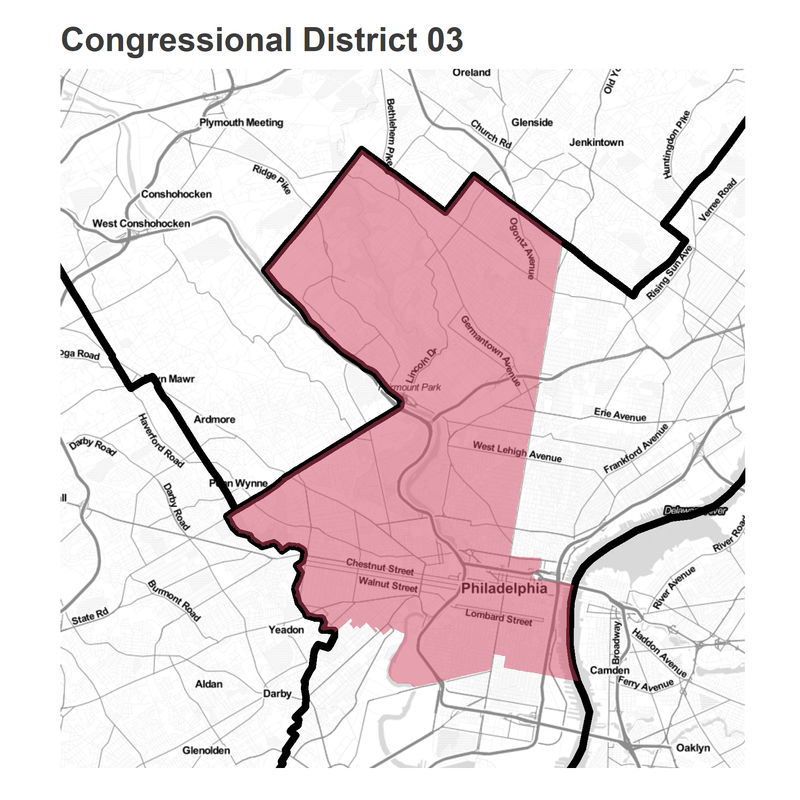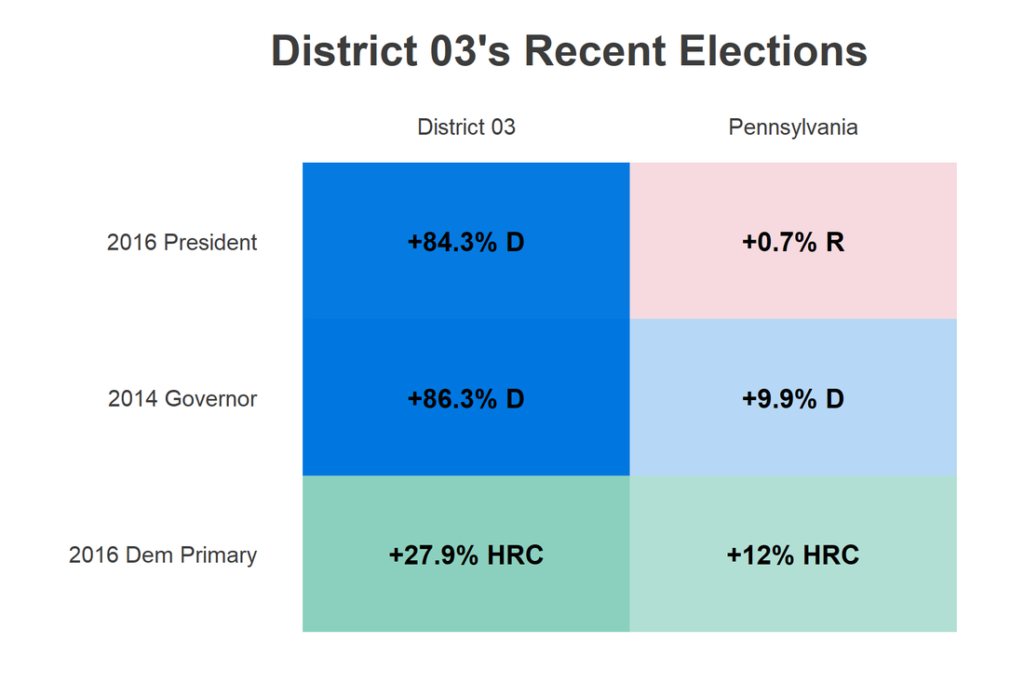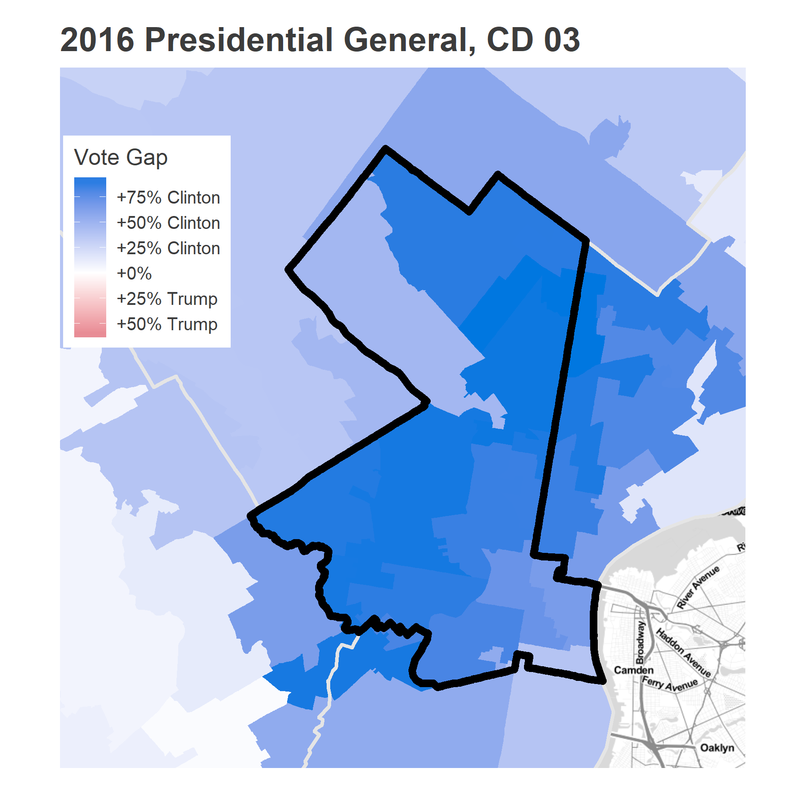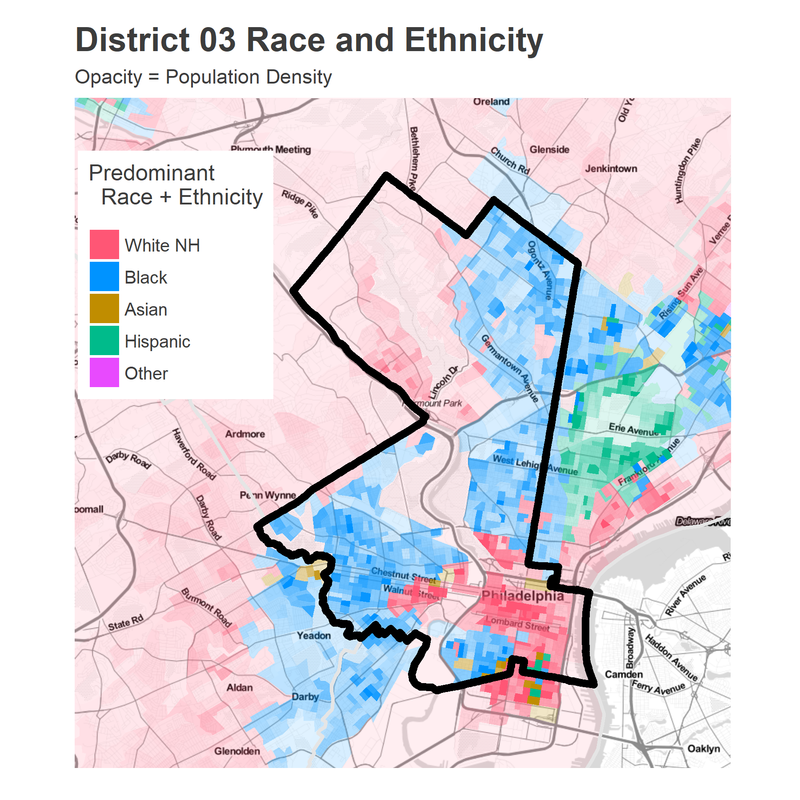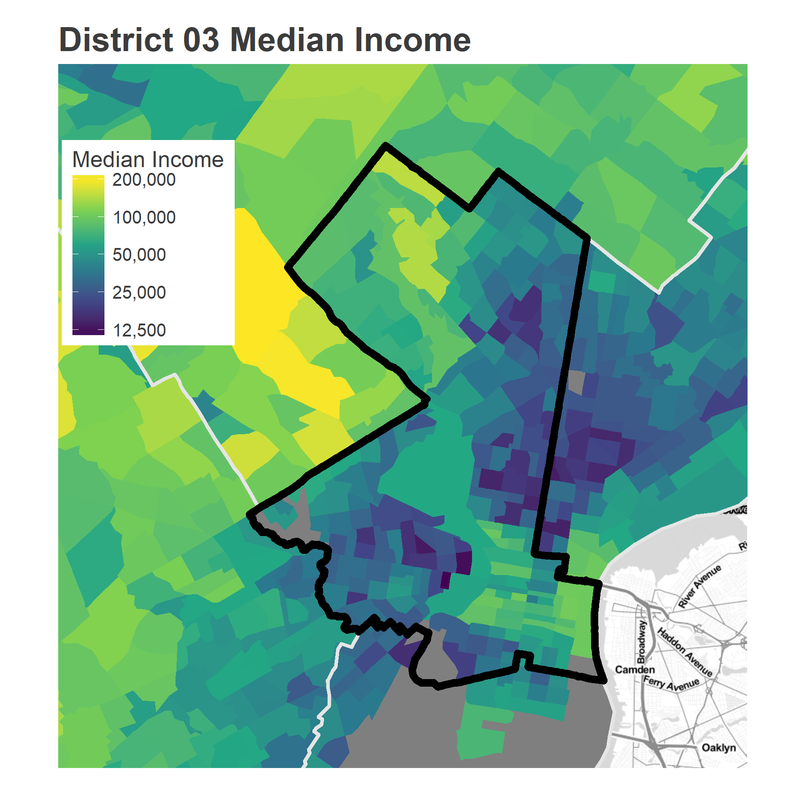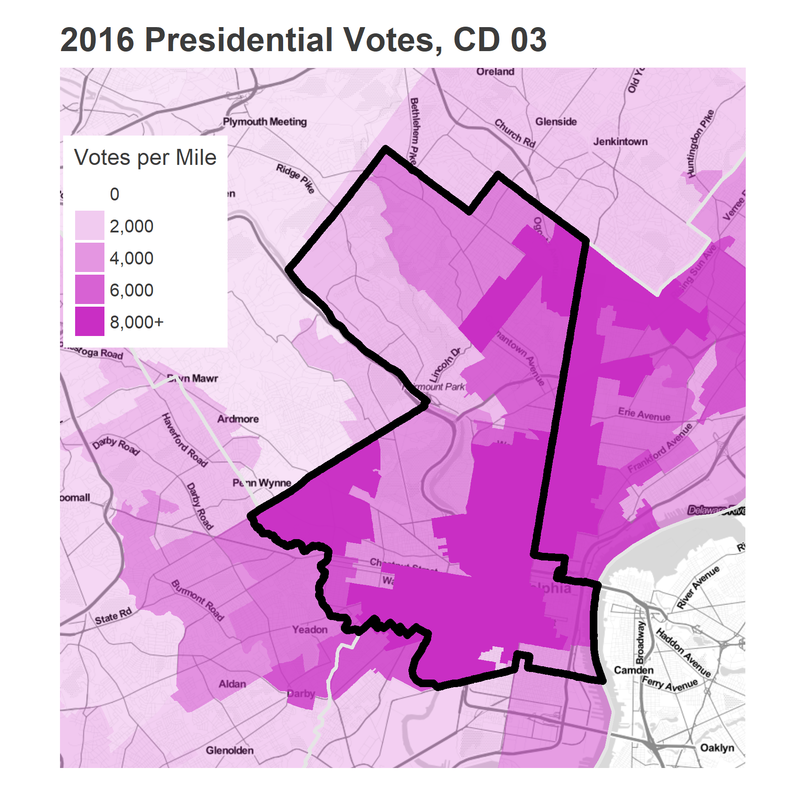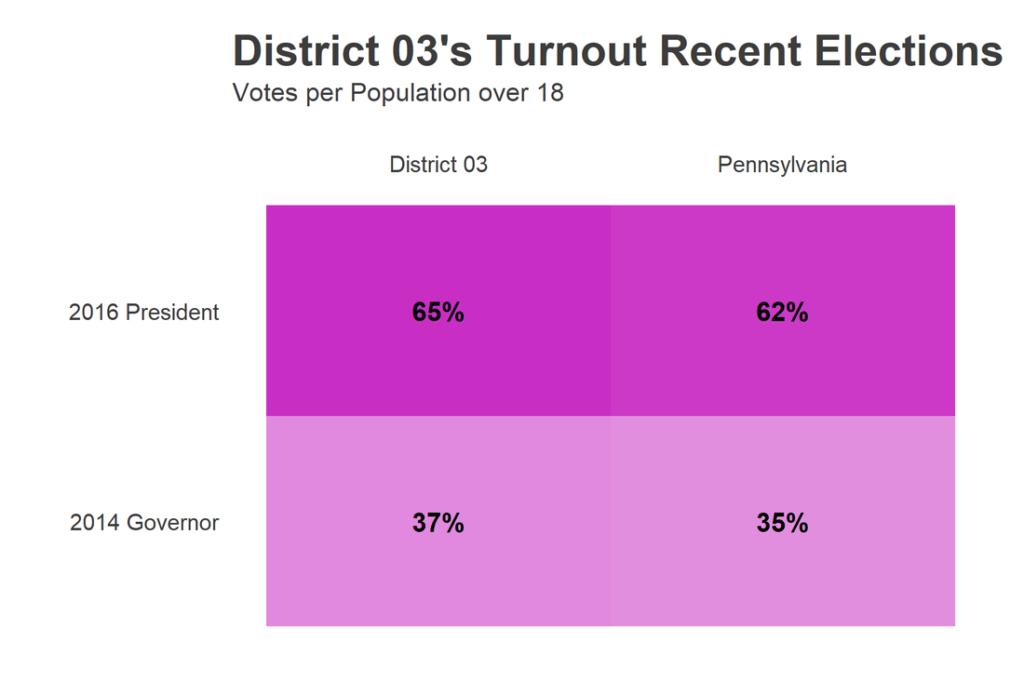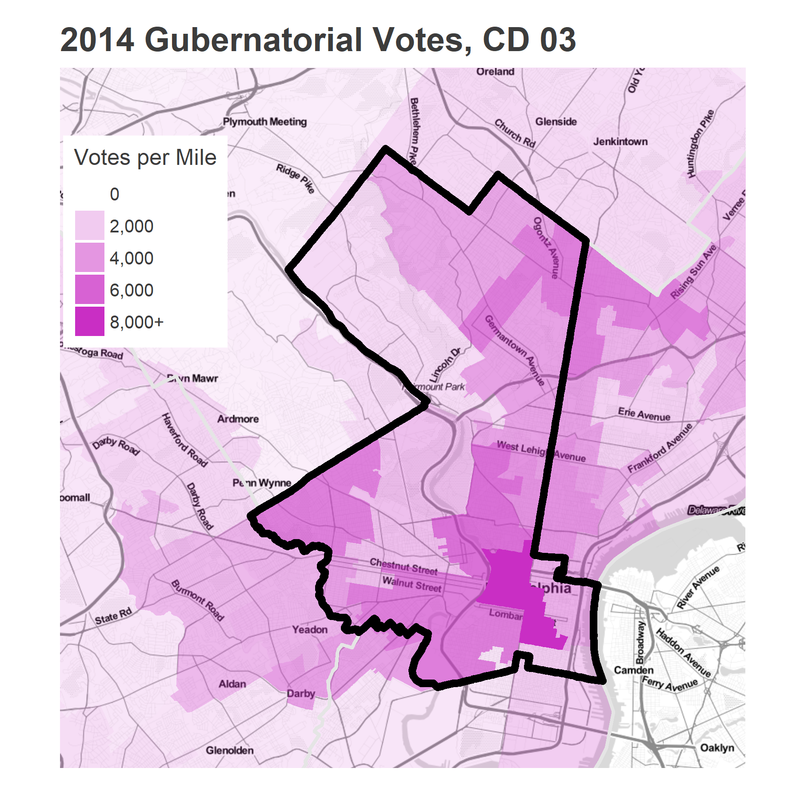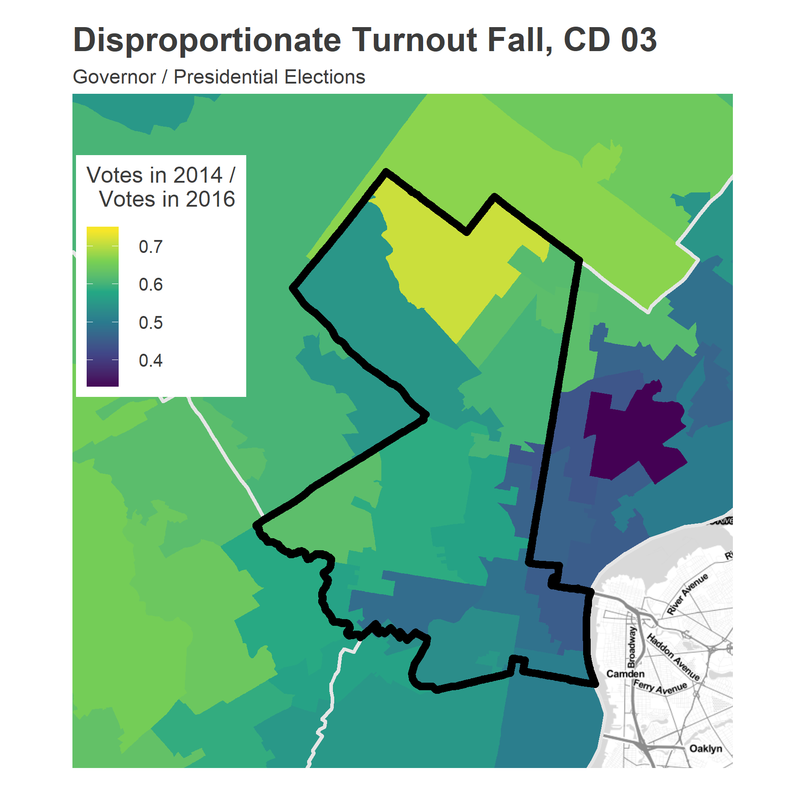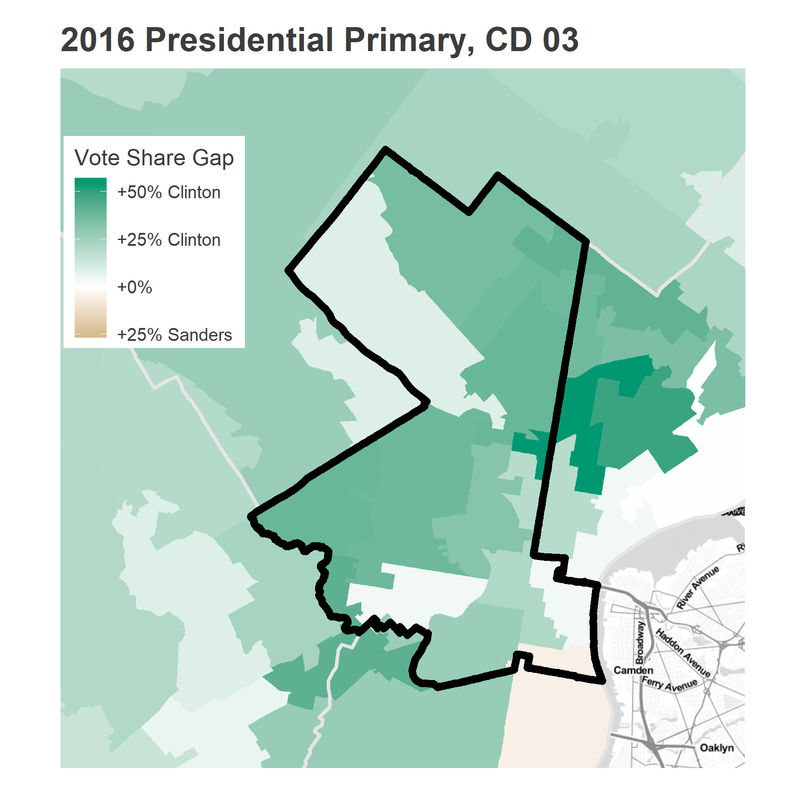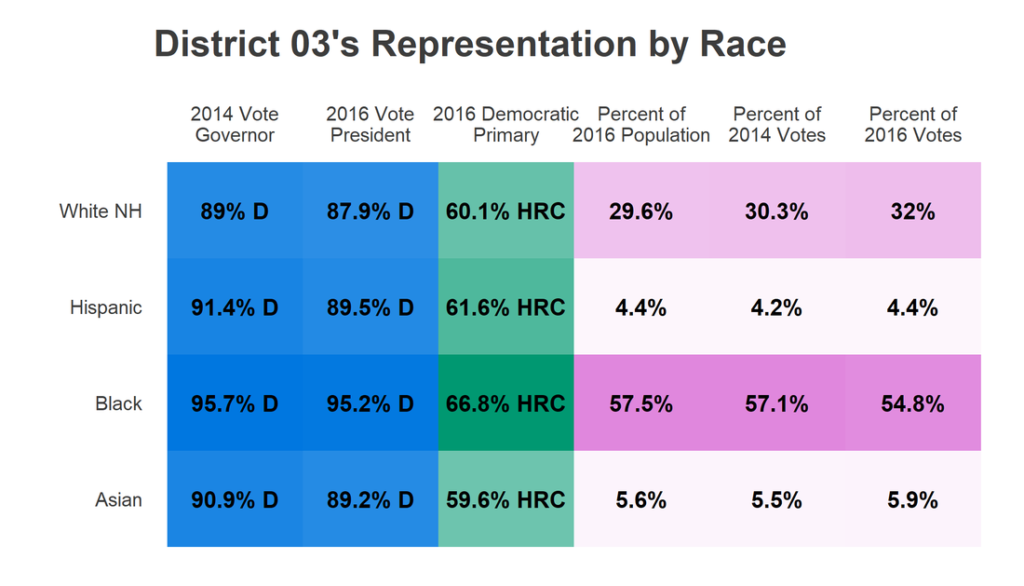This week, I’m profiling each of the State Supreme Court’s new Congressional Districts, looking at their voting behavior and their demographics. Today, the new District 05.

District 05 is the first district we’re looking at that stretches outside of Philadelphia. In total, 80% of its population comees from Delaware County, 16% from Philadelphia, and 4% from Montgomery. (That area in South Philly is deceiving; much of it is industrial and has no population).
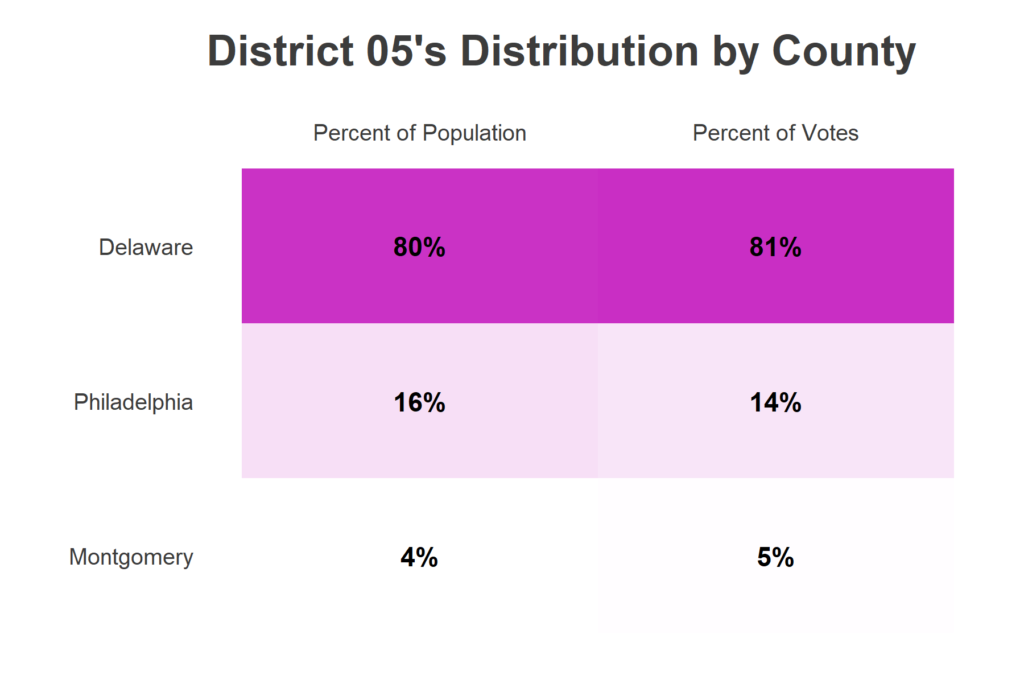
The district contains portions of Bob Brady’s old District 1, which used to stretch out to Chester in order to gerrymander Democratic votes together. It is much less gerrymandered now, though still doesn’t have any Republican strongholds.
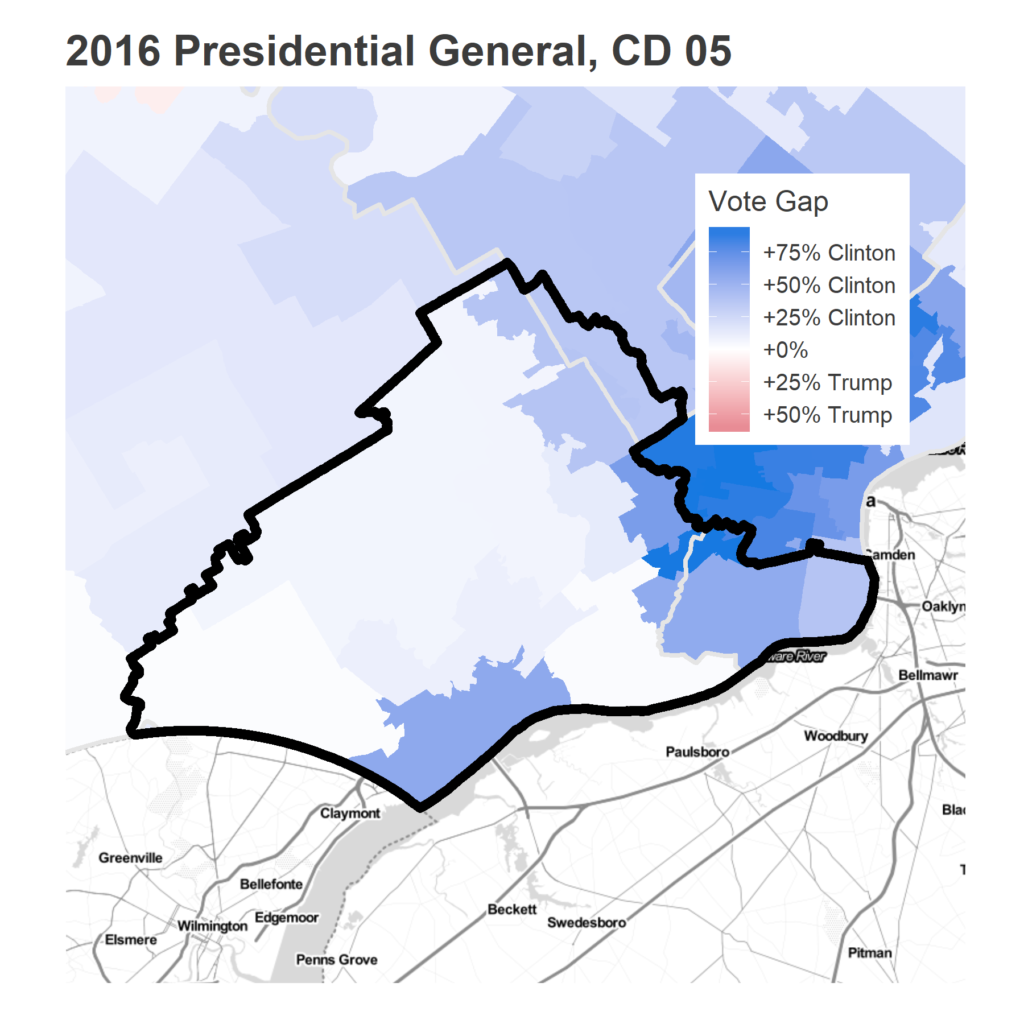
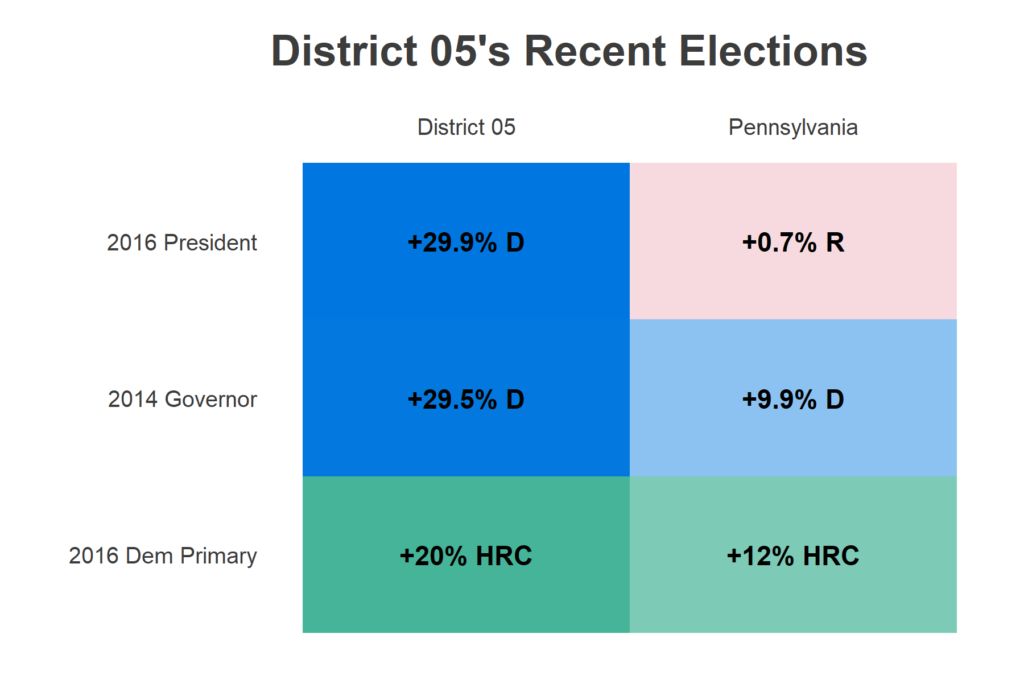
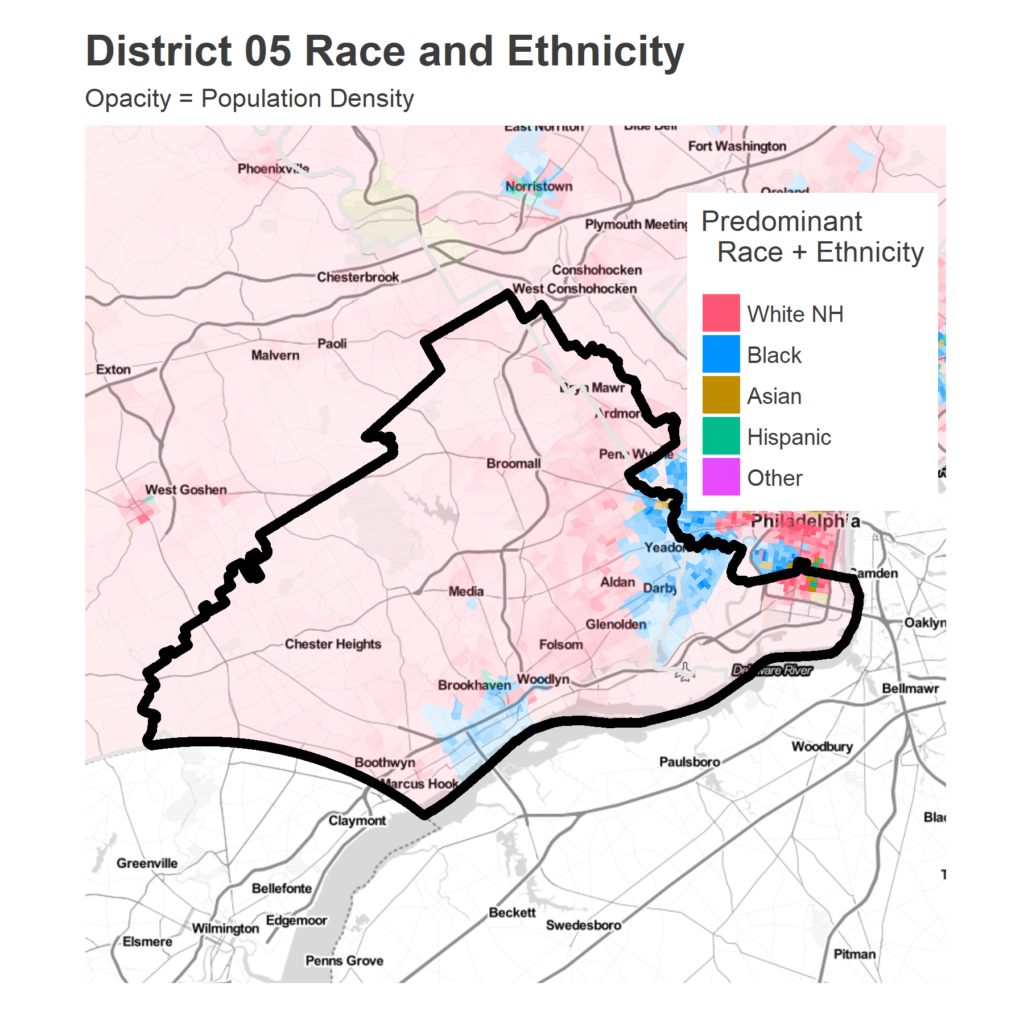

Turnout for the district is high, running six percentage points higher than the state as a whole. That largely is due to the wealthiest suburbs, where 70-80% of the over-18 population votes.
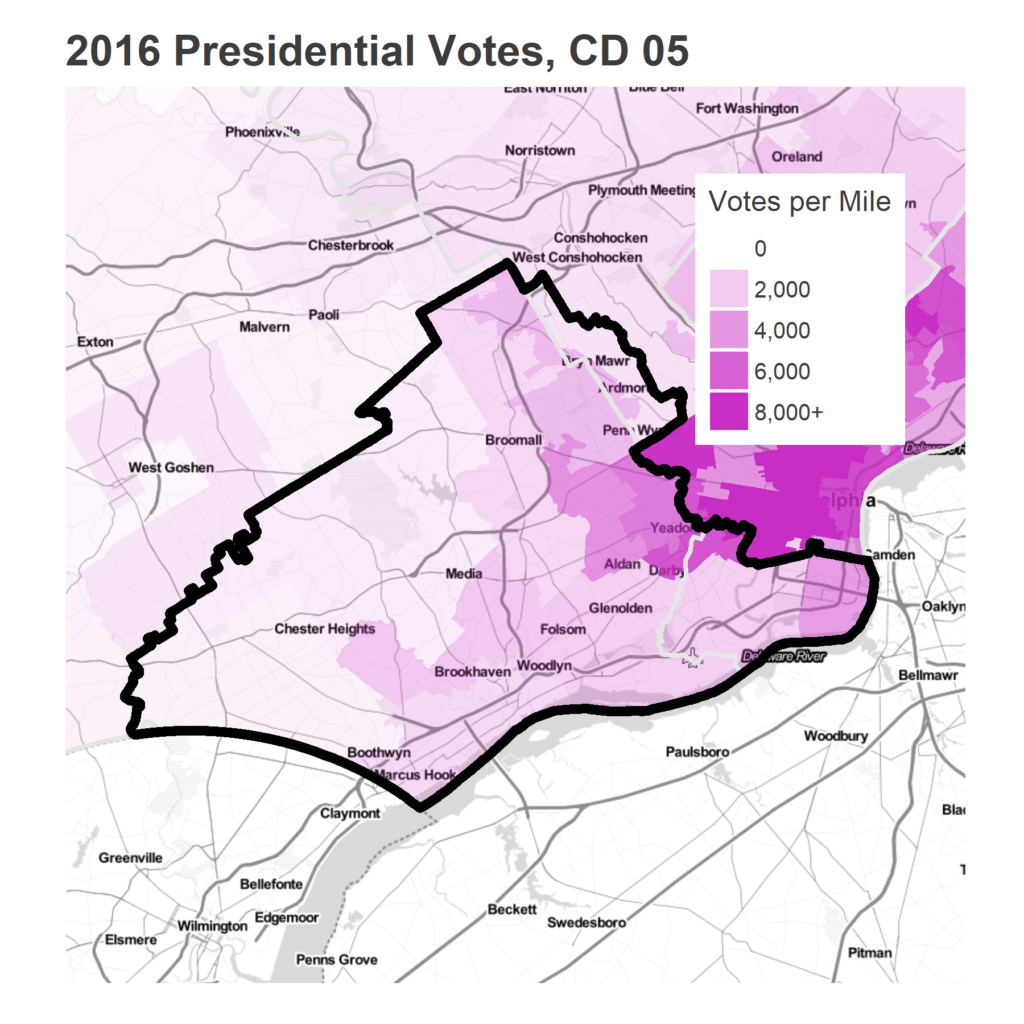
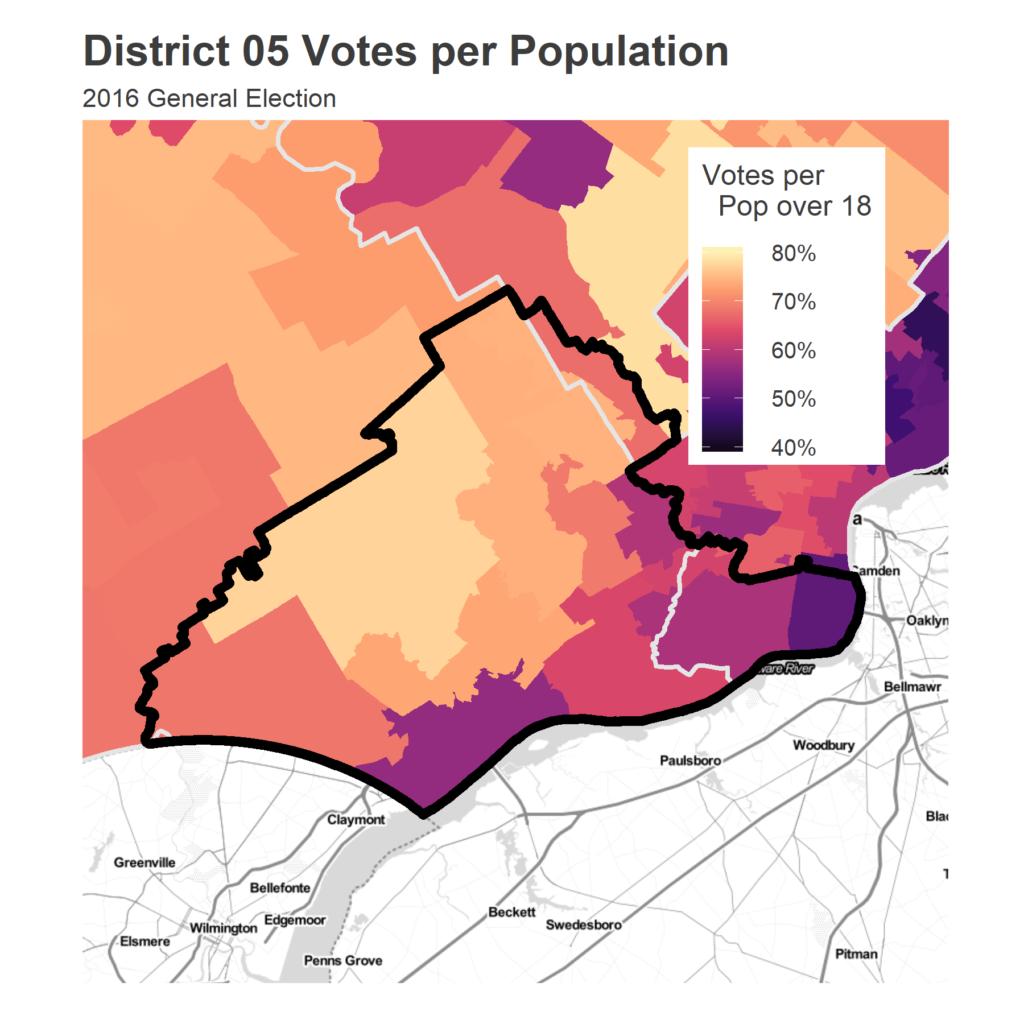
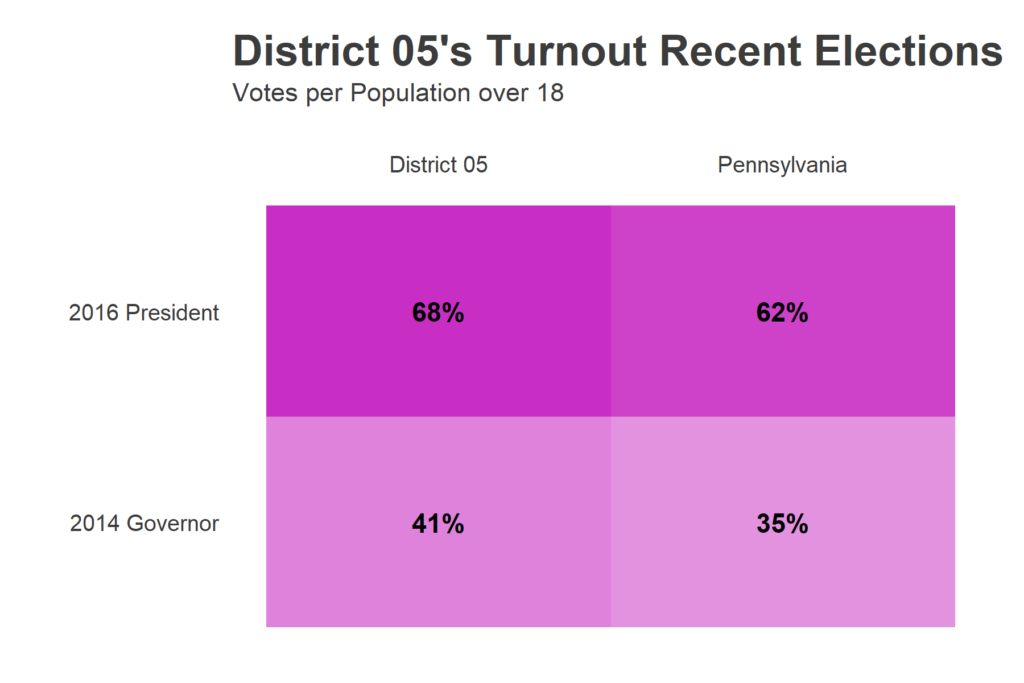
They also fall off less than the rest of the state between Presidential and Gubernatorial elections.
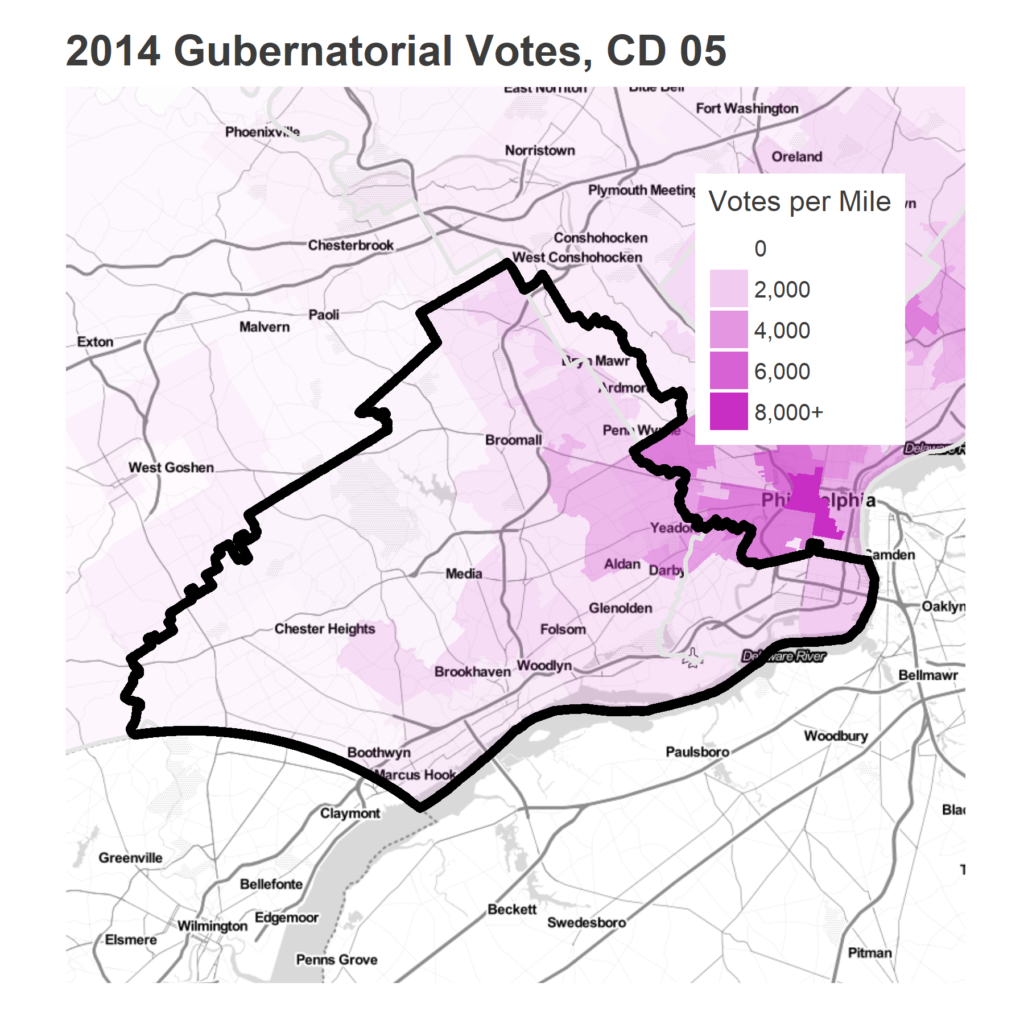
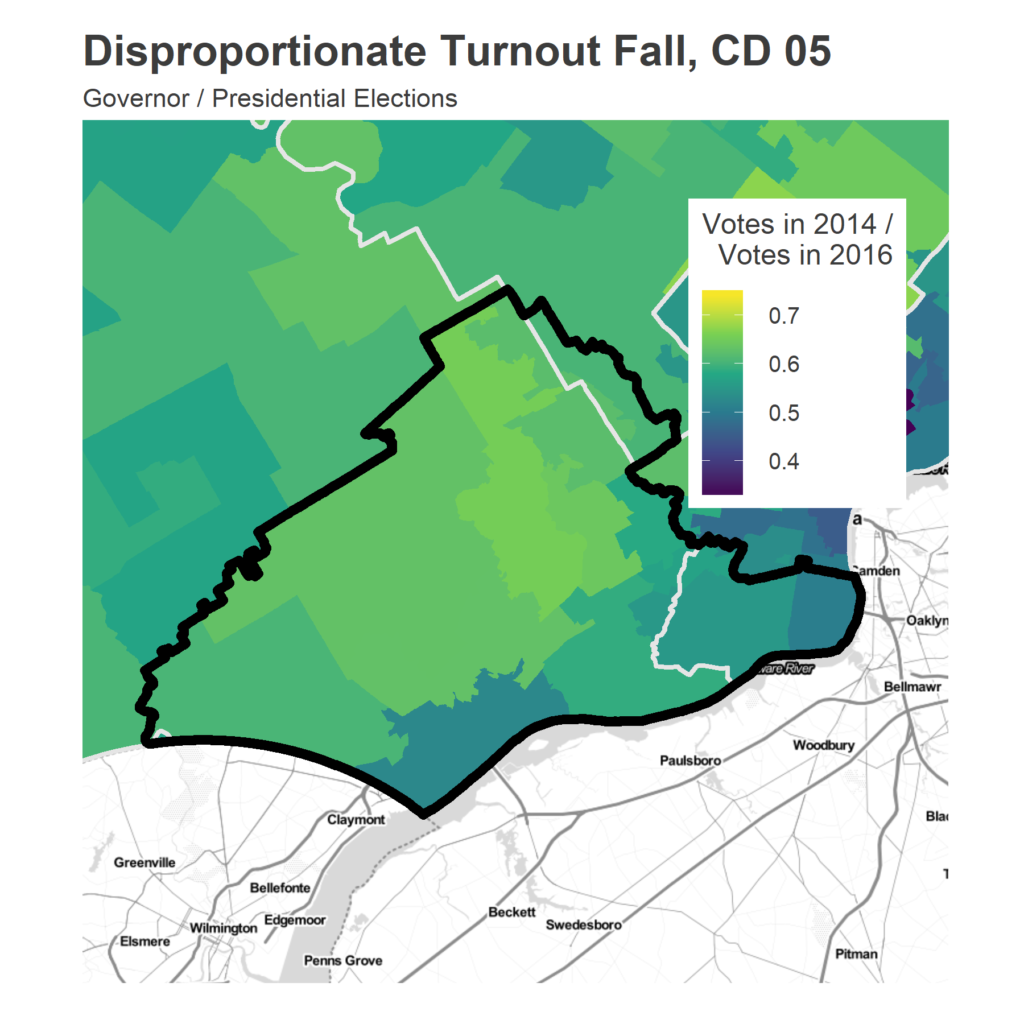
Again, much of the interesting story of the district is in the 2016 Democratic Primary. The district voted largely for Clinton, with a pattern that we saw in other Districts: Black neighborhoods overwhelmingly supported Clinton, wealthier White neighborhoods still supported her by around 20 percentage points, and middle income White neighborhoods and students swung the hardest towards Bernie (though still ended up at close to an even split).
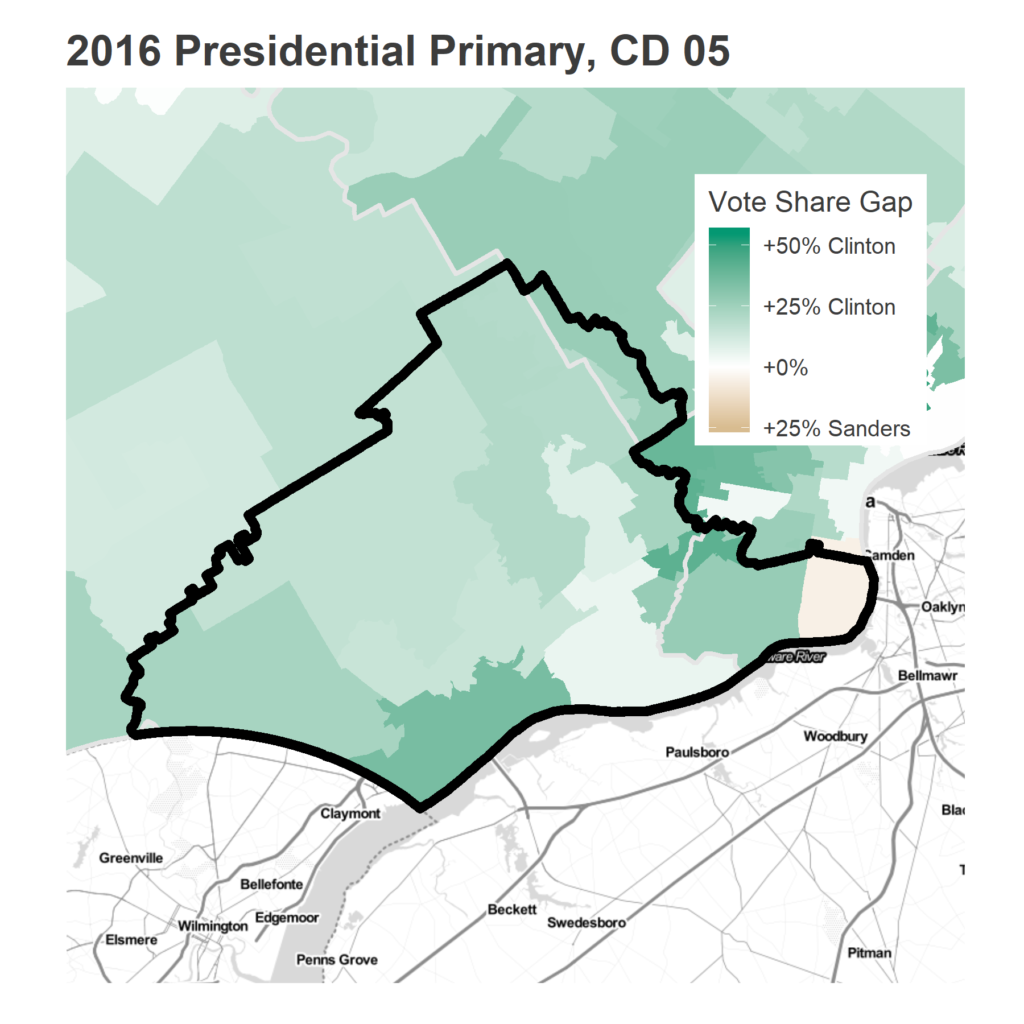
This district displays the largest over-representation of White voters that we’ve seen so far; they represent 64% of the population, but 69% of the vote in 2014. We will see if that continues in this high-attention Gubernatorial race this November.
